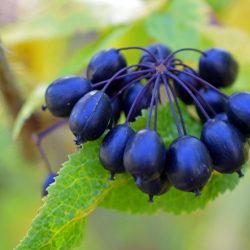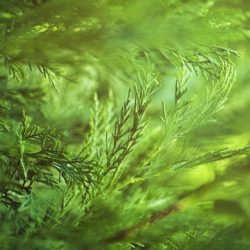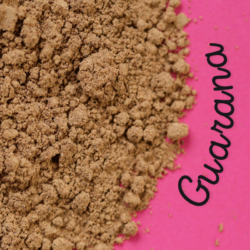Originating in the rainforests of the mountains of southern China, the use of green tea leaf as an infusion is intertwined with the history of China, where the plant has been used in traditional medicine for over 5,000 years to stimulate cognitive functions, treat digestive disorders, promote the elimination of water, alcohol and toxins, stimulate blood circulation and treat high blood pressure.
Green tea contains polyphenols. These thousands of bioactive compounds prevent and treat various diseases. They have antioxidant, anti-inflammatory, anti-cancer, cardioprotective, anti-microbial, anti-diabetic and anti-obesity effects.
A little history
America contributed cocoa, Africa coffee and Oceania kawa. Asia gave birth to tea. A Chinese legend mentions the emperor Chen Nong, who is known to have experimented with over 300 medicinal plants and may have created the first acupuncture needles. This emperor also promoted the sterilisation of water by boiling. 5,000 years ago, Chen Nong was boiling water. Leaves from a nearby shrub blew away in the wind and fell into the hot water. The emperor tasted this infusion by chance and found it to be stimulating and invigorating.
By the time Marco Polo arrived in China, tea had long been the most popular drink in this vast country. In the time of Lao Tzu (5th century BC), it was used as a tonic for the body and mind, to ward off sleep and to sharpen vision as such, as well as inner perception, making tea a sacred substance.
Tea, more than just a pleasant drink :
In the highlands of Tibet and south-western China, tea was nevertheless a source of nourishment for millions of people. In China, tea leaves were first steamed before being ground in a mortar. The leaves were first boiled with rice and milk. They were then flavoured with ginger and orange peel. In Tibet, the tea was beaten in a churn with salt and butter. Tsampa, a Tibetan porridge, was prepared with tea leaves and roasted and ground barley. This preparation was not just a culinary convenience, like adding spinach to butter. The Tibetans presented the tchang as an offering. This butter tea symbolised human blood for the goddess of war, disease and death.
The tea ceremony :
In the Japanese tradition, the tea ceremony is a communal rite. The host guides the guests to the tea pavilion, located away from the main house. This small pavilion contains only the essentials. No object is given pride of place over another. This setting, designed to “immerse the soul in a pleasant silence”, combines refined decoration and pure water for tea.
Enter the tea room, a bare monastic cell where silence reigns supreme. The service follows a rigorous order, with each person holding the cup over which they are inwardly rapt, swirling it for a long time in their hands. And each person, one after the other, absorbs the “liquid jade foam”, the master, the host completing the tasting. Silent thanks are expressed, and the tea set is praised, with words full of grace and economy, as the conclusion to this “intense and active vigil in contemplative silence”.
Here are just a few of the therapeutic benefits of green tea
Neuropsychological, cognitive and neuroprotective properties:
The tea leaf has neurostimulant properties due to its theine content, which is none other than caffeine. In fact, as with guarana or mate, the caffeine contained in tea increases the release of acetylcholine or catecholamines, which improves cognitive activity(memory, attention, alertness, concentration).
Green tea appears to offer benefits in preventing cognitive dysfunction, as suggested by several scientific studies. Studies from the 1990s show that drinking green tea on a daily basis helps to maintain mental agility and cognitive function. Research from 2014 shows that a green tea extract improves working memory. This study was carried out on subjects, mainly aged 24, and indicates a stimulation of connections between neurons.
In addition, a Japanese study published in 2015 established a link between drinking 1 to 6 cups of green tea a day and a reduced risk of dementia or mild cognitive impairment. An epidemiological study included a thousand Japanese people aged 70 and over. The results show that drinking at least one cup of green tea a day reduces the risk of cognitive decline by 38%. This reduction was observed in comparison with individuals who drank green tea less than three times a week. This risk was reduced by more than half (54%) in individuals who drank at least two cups a day.
The protective effect of green tea could be attributable to EGCG (epigallocatechin gallate), its main antioxidant catechin, which is seen as a plausible explanation for the benefits observed for cognitive function.
Lipid-lowering and cardiovascular properties:
Rich in flavonoids, tea inhibits the oxidation of LDL cholesterol, an atherogenesis inducer, which contributes in particular to lowering cardiovascular risk. It increases the production of nitric oxide and promotes arterial vasodilation, particularly in the aorta.
The catechins in green tea have a positive effect on cardiovascular risk. They have antioxidant properties and protect blood vessels. These molecules also regulate lipids in the blood and have anti-inflammatory and antihypertensive properties. They prevent the oxidation of LDL-cholesterol, linked to atherosclerosis. They also limit the absorption of cholesterol by the intestine, reducing LDL and triglyceride levels while increasing HDL. Tea consumption has a modest impact on blood pressure in the short term, but may result in a slight reduction over the long term.
Epidemiological research shows a correlation between regular tea consumption and increased longevity. This eating habit also reduces the risk of cardiovascular disease. Tea consumption also reduces the risk of stroke and coronary heart disease. Green tea shows a significant dose-response relationship in this context. With regard to diabetes and obesity, studies suggest a positive impact of tea consumption, although further research is needed to confirm these effects and determine the optimal doses.
Anti-diabetic and metabolic properties
Green tea extract helps in the management of obesity by stimulating thermogenesis of brown adipose tissue, an activity that has been shown to be much greater than can be attributed to its caffeine alone. Its thermogenic properties may lie essentially in an interaction between its polyphenol (catechin-type) and caffeine content, and the noradrenaline released by the sympathetic system.
Epigallocatechin gallate (EGCG), a component of green tea, lowers blood sugar levels after meals. This reduction occurs in the presence of starchy foods. Studies show that a quantity of EGCG equivalent to 1.5 cups of green tea can reduce the rise in postprandial blood sugar levels induced by corn starch by 50%.
However, the modulating effect of EGCG does not extend to glucose- or maltose-based meals. This specificity of action is thought to be linked to the inhibition of alpha-amylase, a salivary and pancreatic enzyme involved in the breakdown of starch. In the presence of EGCG, the activity of this enzyme is impaired, limiting the complete digestion of starch.
For optimum effectiveness, green tea should be consumed simultaneously with the starch-rich food. This interaction could be particularly beneficial at breakfast, when tea is commonly consumed with starchy foods such as bread.
Antimicrobial properties :
Tea extracts have antibacterial activity against a number of gram-positive and gram-negative bacteria. Taking tea at concentrations identical to those found in beverages (a ‘cup’ of tea contains around 3 mg of dry matter per ml) therefore inhibits methicillin-resistant Staphylococcus aureus.
The catechins in green tea, particularly epigallocatechin (EGCG), are renowned for their antibacterial effects. They slow down bacterial growth and reduce the acidity of saliva. This helps to reduce dental plaque and prevent tooth decay. Research from the University of Surrey, published in the Journal of Medical Microbiology, indicates that EGCG can combat drug-resistant bacteria. It is particularly effective in combination with aztreonam, an antibiotic commonly used against Pseudomonas aeruginosa. This pathogen has developed resistance to several antibiotics, making treatment increasingly complex.
In an in vitro environment, the combination of EGCG and aztreonam outperformed the efficacy of each isolated agent against P. aeruginosa. This combination increases the survival of moth larvae exposed to both compounds. In addition, it does not present any significant toxicity for human skin cells.
According to the scientists, EGCG may increase the permeability of bacteria to aztreonam or disrupt antibiotic resistance processes. With antimicrobial resistance on the rise, combining EGCG, a natural product, with existing antibiotics is a strategic approach. This method could improve the efficacy and extend the clinical use of antibacterial treatments, according to Dr Jonathan Betts from the University of Surrey.
Anti-cancer properties :
The catechins in tea inhibit the proliferation of tumour cells, and also promote the destruction of leukaemia cells. Several epidemiological studies suggest that drinking green tea has a positive effect on reducing the risk of certain cancers, notably endometrial, ovarian, breast and prostate cancer.
Green tea has anti-cancer properties and stimulates the immune system. It is particularly effective against certain cancers: chronic lymphatic leukaemia, breast, skin and prostate. As a supplement, at a dose of 450 mg/day, it also helps to prevent or reduce the undesirable effects of radiotherapy, such as diarrhoea and vomiting.
The antioxidant activity of green tea may reduce the efficacy of anti-cancer treatments, particularly those with oxidative action, including radiotherapy above 450 mg/day. It may also interact with certain drugs, such as cyclophosphamides and dacarbazine. In addition, green tea may increase toxicity when combined with dacarbazine and EGFR inhibitors.
Green tea consumption affects the efficacy of bortezomib- and irinotecan-based chemotherapies. Its use during these treatments is therefore not recommended. In addition, although green tea can slow the progression of certain prostate cancers, it can activate a gene that makes cells less sensitive to chemotherapy.
General side effects such as gastrointestinal problems or reduced iron absorption may occur, particularly with high doses of green tea extracts. There are also interactions with anticoagulants, which can alter their effectiveness.
Adults undergoing anti-cancer treatment should consume green tea with caution. They should only drink it on and around the days of treatment. The recommended daily intake is 3 to 9 cups, equivalent to 250 mg of catechins. Exceptions apply to pregnancy, breast-feeding and heart conditions. It is crucial to follow the dosage instructions on the pack. Consulting a doctor for personalised recommendations is essential.
What precautions should be taken when drinking green tea?
Contraindications :
- The use of green tea is contraindicated in the case of activegastric or duodenalulcers, cardiovascular pathologies (high blood pressure, arrhythmia) and hyperthyroidism, unless under medical supervision.
- Green tea is not recommended for pregnant or breast-feeding women.
- This plant is reserved for adults.
Precautions for use:
- Do not exceed the recommended quantities.
- Do not combine caffeine and ephedrine (risk of hypertensive crisis and increased cardiovascular risk).
- Avoid combining caffeine-rich products (coffee, guarana, yerba, mate, kola nuts, etc.); cumulative risk of the molecule.
- The maximum daily dose of caffeine for an adult is 400 to 450 mg.
- You should also avoid drinking tea in the evening; the presence of caffeine causes sleep disturbances and reduces the sedative effects.
- Bear in mind that caffeine increases the elimination of calcium and magnesium in the urine.
- Use with caution in people with weakened liver function.
Drug interactions :
- The caffeine contained in tea can interact with a large number of synthetic medicines, in particular certain antibiotics (such as quinolones), theophylline and bronchodilators, psychotropic drugs (MAOIs), anticoagulants and platelet anti-aggregants, psychostimulants (amphetamines, cocaine, ephedrine), diabetes treatments, diuretics, lithium, cimetidine, antacids, clozapine,alendronate and nicotine.
- The tannins contained in tea may reduce the absorption of iron from the intestinal mucosa.
- Take into account the vitamin K content of tea when taking anti-vitamin K.
- Green tea may also limit the absorption of folic acid.
Speaking of green tea, have you ever heard of Matcha?
Medical literature and clinical trials:
- XING L. et al. Recent Advances in the Understanding of the Health Benefits and Molecular Mechanisms Associated with Green Tea Polyphenols. J Agric Food Chem. 2019 Jan 30
- CAULI O. et al, Caffeine and the dopaminergic system, Behav Pharmacol, 2005
- HOOPER L. et al. Flavonoids, flavonoid-rich foods, and cardiovascular risk. A meta-analysis of randomized controlled trials, Am J Clin Nutr, 2008 Jul
- DULLOO A.G et al, Grenn tea and thermogenesis: interactions between catechin-polyphenols, cafeine and sympathetic activity, International Journal of Obesity, 2000
- HAMILTON-MILLER J.M., Antimicrobial properties of tea (Camellia sinensis L.), Antimicrob Agents Chemother, 1995 November
- TANG N.P. et al, Tea consumption and risk of endometrial cancer: a mataanalysis, Am J Obstet Gynecol, 2009 Dec
- ZHANG M. et al. Tea consumption and ovarian cancer risk : a case control study in China, Cancer Epidemiol Biomarkers Prev, 2002
- OGUNLEYE A.A et al. Green tea consumption and breast cancer risk or recurrence : a meta-analysis, Brast Cancer Res Treat, 2010 Jan







